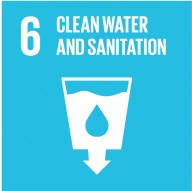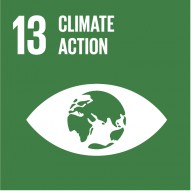
Reuse of SWTP outflows for irrigation and artificial recharge of groundwater aquifers
Challenge
The 2007 Communication on Water scarcity and Droughts makes clear that water scarcity and drought events are likely to be more severe and more frequent in the future due to climate change and increasing population. The potential role of treated wastewater reuse as an alternative source of water supply is now well acknowledged and embedded within international, European and national strategies. UN Sustainable Development Goal on Water (SDG 6) specifically targets a substantial increase in recycling and safe reuse globally by 2030. Water reuse is a top priority area in the Strategic Implementation Plan of the European Innovation Partnership on Water, and maximisation of water reuse is a specific objective in the Communication "Blueprint to safeguard Europe's water resources" (https://ec.europa.eu/environment/water). Water reuse and artificial groundwater recharge in Greece have only been implemented in rare cases, in pilot applications and small scale. Closing the cycle of water use and promoting water reuse, a plan is drafted for the reuse of the outflows of SWTP of the coastal areas of the municipalities of Kropia and the Saronic, for irrigation and artificial recharge of the local groundwater aquifers.
Approach
A. Updating and finalising studies investigating the reuse of the treated effluents of Paiania - Koropi SWTP in agricultural areas, taking into account the quantitative and qualitative characteristics of treated wastewater from the coastal areas of the Municipalities of Kropia and Saronic: Calculating the potential area that can be irrigated, based on estimated irrigation needs and soil drainage, absorb and retention of nutrient load capabilities. Evaluation of alternative cultivation scenarios and economic analysis evaluation. The above is complemented by a preliminary design of two reservoirs, of sufficient volume, and the selection of a suitable location for their location, with the required accompanying hydraulic projects and environmental monitoring planning, control and assurance of water quality.
B. Hydrogeological investigation on the effects of artificial groundwater recharge and irrigation based on reused, treated wastewater of Paiania - Koropi SWTP on the groundwater systems of the wider area: The investigation, regarding the artificial recharge of the underground aquifers, is carried out in six areas of the local Groundwater Systems (three areas in the granular aquifers and three in the karstic ones). The Hydrogeological study is complemented and supported by two specialized applications:
• Conducting pumping tests and recharge tests to identify aquifer hydraulic characteristics and artificial recharge capabilities.
• Setting up a groundwater model (MODFLOW) and performing numerical simulations for evaluating the proposed recharge locations and recharge schedule, for the area of the granular aquifers near the airport area. The investigation is curried out for 40 years of historical hydrological conditions and for a range of Climate Change Scenarios.
Impact
Meeting the greater UN and more specific EU targets for water reuse, use of treated Paiania - Koropi SWTP outflows, in irrigation and artificial recharge is expected to increase the drought and climate change resilience of the coastal area of the municipalities of Kropia and the Saronic, Attika, Greece.
The artificial recharge of quality degraded, local groundwater resources (granular and karst aquifers) is expected to renew groundwater reserves and support the recovery of the overexploited and depleted aquifers, which face human induced quality degradation as well as salinization.





